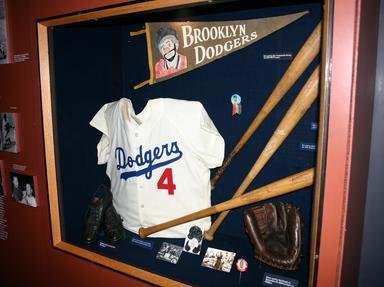Quiz Answer Key and Fun Facts
1. On April 18, 1958, The Dodgers baseball club, formerly from the Flatbush section of Brooklyn in New York, played their first game on the Pacific Coast as the Los Angeles Dodgers. What venue served as the site for the opening day game?
2. Who was the owner of the Dodgers that spearheaded the move of the team from Brooklyn to Los Angeles?
3. From the first Dodgers' game played in Los Angeles (1958), until the end of the 2008 season (50 years later), who managed the team for the most number of full seasons?
4. Between 1958 and 2008, which American League team did NOT face the Los Angeles Dodgers in post season World Series Play?
5. The Los Angeles Dodgers has always been known for their strong pitching staff. From 1958 through 2008, which team pitcher recorded the most victories?
6. Since opening day at Dodger Stadium in 1962, Bob Mitchell, Chauncey Haines, Don Beamsley, Helen Dell, and Nancy Bea Hefley have (at different times) worked in a stadium position that enhanced the overall Dodgers' experience for millions of fans and visitors attending home games. What job title did they share?
7. Primarily known for their pitching, the Los Angeles Dodgers produced a number of fine hitters in their first five decades as well. During those 50 years, which Los Angeles Dodgers slugging star has been responsible for the most home runs?
8. The first 50 years, 1958 to 2008- during those 50 years the organization produced twelve "Rookie of the Year" players, the most for any major league team during that time frame. Which Los Angeles Dodgers' player was NOT named a season Rookie of the Year?
9. What distinction do former Los Angeles Dodgers' players Frank Robinson, Dusty Baker, Jeff Torborg, and Mike Scioscia share?
10. Working as a baseball scout, a coach, a manager, and a front office executive, Tommy Lasorda was one of two people to have spent 50 years in the Los Angeles Dodgers' organization. What was the job title of the other person?
Source: Author
MaceoMack
This quiz was reviewed by FunTrivia editor
stuthehistoryguy before going online.
Any errors found in FunTrivia content are routinely corrected through our feedback system.

